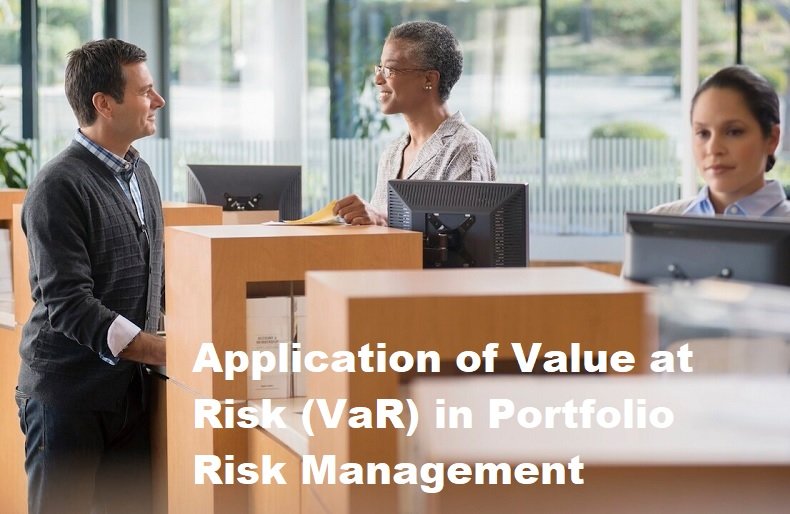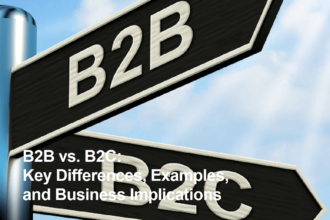Understanding Value at Risk (VaR)
Value at Risk (VaR) is a risk measurement technique that is often used in financial risk management. VaR is used to calculate the maximum possible loss that can occur in a certain time period with a certain level of confidence. In the investment context, VaR is an important tool that helps investors and financial companies measure the extent of risk they face and make appropriate investment decisions. The main function of Value at Risk is as a risk measurement tool that allows market players and regulators to understand the risk exposure faced by an investment portfolio. By applying VaR, portfolio owners can identify potential losses and keep their portfolio within predetermined risk tolerance limits. This helps stakeholders in making informed decisions and managing risk exposure more efficiently.
The advantages of using Value at Risk include ease of understanding and interpretation, simplicity in calculations, and the ability to present risk information quantitatively. This helps decision makers understand the potential impact of various investment strategies and consider appropriate alternatives. In addition, the VaR measure can also be compared directly between different portfolios, making it easier to measure relative risk. However, Value at Risk also has several drawbacks. One of them is the assumption of normality of distribution of profits and losses which may not always apply to financial markets. This situation can lead to inaccurate VaR estimates, especially in periods of high volatility. In addition, VaR does not provide information regarding the distribution of losses beyond a predetermined level of confidence, so it does not provide an overview of extreme risk or ‘tail risk’.
Value at Risk (VaR) Calculation Method
Historical Simulation is a Value at Risk (VaR) calculation method that relies on historical data from changes in asset prices to estimate the risk faced by a portfolio. In this method, the main assumption is that price changes in the past will continue to occur in the future. To calculate VaR using this method, it is necessary to obtain historical data on asset prices for a certain period, and then calculate the percentile of the price change at the desired confidence level.
Variance-Covariance or Parametric VaR is a risk calculation method that uses a simple statistical model with the assumption that changes in asset prices are normally distributed. In this method, volatility and correlation between assets are used to build a covariance matrix. After obtaining the covariance matrix, VaR can be calculated using volatility along with the confidence level and desired investment horizon. This method is computationally efficient but sometimes less accurate because the normal distribution assumption often does not match reality.
Monte Carlo Simulation is a more sophisticated and realistic method for calculating Value at Risk. This method involves simulating the random behavior of assets based on volatility and correlation, thereby producing a distribution of possible future price changes. Using this simulation data, VaR can be calculated by determining the percentile of simulation results at the desired confidence level. The advantage of this method is that it is not constrained by certain distribution assumptions and can capture more extreme price movements.
Comparisons between Value at Risk calculation methods can be made to identify the advantages and disadvantages of each method. Historical Simulation relies heavily on past data and does not take into account structural changes in risk factors. Variance-Covariance has high computational speed, but is limited by the assumed distribution of asset price changes. Meanwhile, Monte Carlo Simulation is more flexible and accurate, but requires longer computing time and more computing resources. In choosing the most appropriate VaR calculation method, it is important to consider the specific needs of the portfolio and the characteristics of the assets contained therein. Each method has advantages and limitations, therefore it should be considered carefully according to the situation and available resources in order to obtain the most accurate risk estimate.
Application of Value at Risk (VaR) in Portfolio Risk Management
The application of Value at Risk (VaR) in Portfolio Risk Management begins with identifying the assets that will be included in the portfolio. This process involves selecting stocks, bonds, other financial instruments, or a combination of these instruments. Identification must include historical analysis and future growth potential as well as risk factors that may affect investment value. The aim of this stage is to determine the optimal asset composition so as to achieve investment objectives while minimizing portfolio risk. After determining the assets to be included in the portfolio, the next step is to calculate the VaR for each asset. Value at Risk (VaR) states the maximum potential loss that can occur due to changes in asset prices in a certain period with a certain level of confidence. This is a benchmark for possible losses and risks that investors must face. Commonly used methods include historical simulation, variance-covariance, and Monte Carlo simulation. VaR calculations help investors understand the extent of risk of each asset in a portfolio.
Next, the VaR for each asset needs to be aggregated to produce the overall portfolio VaR. The aggregation process combines individual VaRs using the correlation and covariance between asset exchange rates, providing a more accurate picture of overall portfolio risk. Using the right aggregation approach is critical, because errors in estimating dependencies between assets can lead to hidden risks and a false sense of security. Finally, after gaining insight into portfolio risk, investors can optimize their asset allocation strategy based on the level of risk discovered. In general, investors tend to diversify assets to reduce overall portfolio risk. Optimal asset allocation requires adjustments based on VaR analysis and considering factors that influence investments such as risk tolerance, investment resources, and investment objectives.
Evaluation of Value at Risk (VaR) performance
Evaluation of Value at Risk (VaR) performance is an important step in measuring the risk faced by an investment portfolio. One way to test the accuracy of VaR calculations is to use the backtesting method. This method involves testing VaR performance against historical data to determine how well the model is at forecasting potential losses. Through backtesting, we can identify whether the VaR calculation is appropriate in estimating portfolio risk, and make adjustments if necessary. Although VaR has become a popular tool for measuring investment risk, there are several limitations that need to be considered. One of them is the inability of VaR to dynamically include changes in price volatility and correlation between assets. Therefore, some assumptions may not correspond to reality as market conditions change. In addition, VaR also does not describe extreme risks that may occur beyond the limits set by the model.
As an alternative in risk management, methods such as Expected Shortfall (ES) can be considered. In contrast to VaR which only estimates potential losses up to a certain level, ES provides a more accurate picture of the magnitude of potential losses in the most extreme situations. Thus, ES can help investors and portfolio managers anticipate greater risks and make more informed decisions in managing their portfolios. In practice, both VaR and ES have their own advantages and limitations. Therefore, it is important for stakeholders not to only rely on one method in risk management, but rather to use a combination of various approaches. In this process of performance evaluation and risk limitation, additional research and the use of additional tools such as portfolio diversification techniques, as well as in-depth market studies, can help maximize investment returns while minimizing the risks faced.









